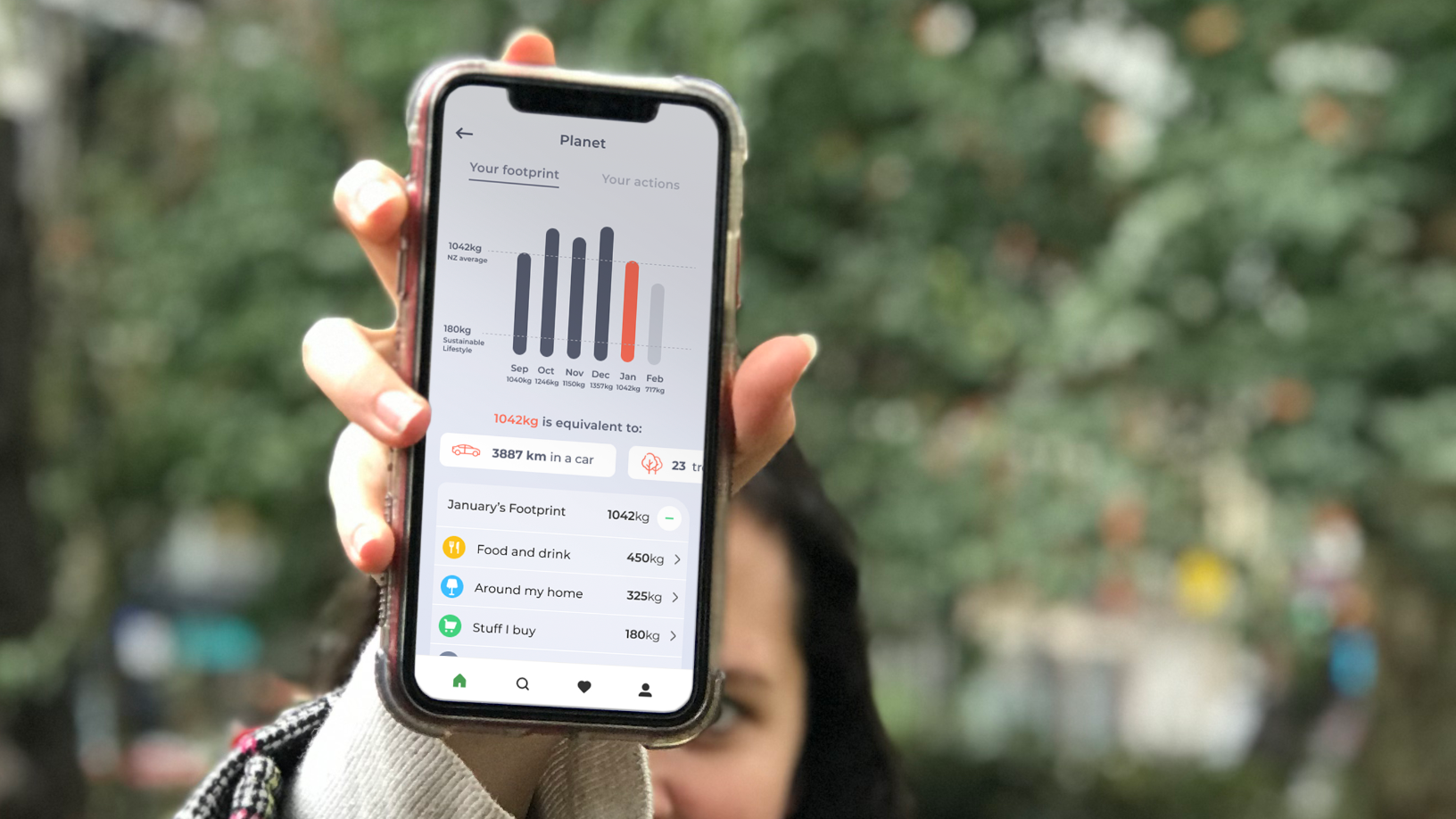In just over two years, Barcelona-based eCooltra has become Europe's market leader in two-wheel electric transport. Moving from a purely offline store-based rental model to the most widely used online scooter sharing system in Europe, Cooltra plans to integrate both businesses into one platform to prepare for international growth via franchises. The eCooltra two-wheel sharing app will leverage Cooltra's well-established offline rental brand that is ranked as one of the world's top provider of two-wheel rentals.
As the CEO and co-founder of both companies, Timo Buetefisch shares his insights with CompassList at the South Summit 2018 in Madrid. He explains how his team made travel smarter and discusses the future of sustainable travel.
Q: You started Cooltra as an offline company in 2006 in Barcelona. What prompted you to set up shop, and why in Barcelona?
A: I went to Barcelona to study for an MBA from 2002–2004, and then stayed on working in project management. In 2006, my personal scooter broke down. So I took it to the garage for repairs and for the two weeks I was without it, I wanted to rent a scooter, but there wasn't a place to do so. So I thought, wow we can professionalize this and set up a scooter rental business.
Actually, my business model was always the big car rental companies like Sixt and I thought: what these guys do for four wheels, let's do the same for two wheels. None of these large companies have ever set up a scooter line of business, not even in the 12 years since I set up Cooltra, though they did some trials. It is a very different business to manage. For example, our scooters have to go for service every 2000km, unlike a car.
At what point did you decide to develop the online business?
We only set up eCooltra just over two and a half years ago, after almost a decade offline. It's a completely online scooter-sharing business where you sign up as a user with your driver's license. We acquired our customers via Facebook and Instagram ads and the whole process is digital, so nothing to do with the model or customers for the Cooltra stores. Again we were inspired by the market, by companies like Zipcar and Car2go, the same business in the four-wheel market.
So we went to our provider back then, Govecs, a German brand, and said: "Why don't we create a sharing scooter, a keyless scooter which you can start via an app?". Here, we had to develop a product from scratch. We took a normal electric scooter, built into it a stoppable clock technique battery and installed a whole telematic system. Now, we have other scooters too and don't just work with one provider. We worked with external companies so the time to market was quicker. With external providers, you can push them a little bit more, as you have the option to change provider, which is not the case with using an in-house team.
As you did not come from a digital background, were there any lessons learned in moving online?
My experience was purely in "brick and mortar" business. But seeing trends in the market, we decided to go digital and now we have this completely digital business. We still maintain our core business with 15,000 scooters, 3,500 in the sharing scheme and 10,500 in the traditional renting scheme. Our challenge now is to convert all our traditional businesses into digital. Presently, besides the e-sharing vehicles, all of the store vehicles are available to rent online but require pickup and drop off in person.
One of the mistakes we made in going digital was scaling up way too quickly, trying to enter too many cities at once. We will not close any of our existing operations, but we recognize it would have been better to start with fewer destinations and build up productivity first. At the moment we are in five cities: Madrid, Barcelona, Lisbon, Rome and Milan; and have just hit 500,000 users on the app.
How did eCooltra become Europe's top e-scooter service in its second year of life?
We went to the market at the right moment with certain trends going in our favor. Firstly, sustainability: inner cities have a problem of pollution and traffic, so these are the external factors. Then, our customer base: young people don't dream about vehicle ownership anymore, people just want access to mobility; they would rather dream of a great smartphone than a great car. People now aged 20–30 want mobility through an app. They see ownership more like a liability. So there was pent-up demand waiting to come out that has helped us to grow by 300% in Year 2. And these eCooltra customers are citizens of the cities, not tourists, unlike in the Cooltra stores. For the app business, tourists don't even account for 0.5% of users, though some citizens of our cities do also roam between locations. Tourists still use the more traditional rental in shops. Good weather and sun is also undoubtedly a factor that helps us to grow in our key markets!
Facing increasing competition, how will you remain on top and will you need to change?
First of all, the market is growing very fast and the more offer there is, the more people will leave their private vehicles. Just in Barcelona, I think there is a shared fleet of around 3,000 scooters and we have 1,000 of those. However, the whole scooter total in Barcelona is 350,000 vehicles, so the sharing fleet is a tiny percentage of that. So there is room for all, certainly for the five players in the market now.
We are continuously working to improve our product and offer our users the best service and platform. We are one of the only companies having a customer service team working 24/7, in five languages. Also, our maintenance team works seven days a week, to ensure our scooters are ready to go. Last but not least: eCooltra belongs to Cooltra Group that has over 12 years of experience in the two-wheel sector, giving us a wider perspective of the market.
We also seek to attract and retain a high vehicle density, 30-minute free trials for new users, customer loyalty program with discounts and a recommend-a-member scheme. Having more competition has had a positive effect and each provider positions itself differently. We offer 50cc scooters which give us access to a wider section of the public – you don't need a specific motorbike license for our vehicles while other providers use 125cc vehicles.
How do you see the development of the offline versus online dynamics evolving?
One of our four main projects right now is to bring the online and offline operations together. This requires bringing the customer databases together across the businesses. This will help us to predict bookings better and be more efficient in terms of data management. The most important target now is to focus on the internet services. Nowadays people book in two taps, online they are able to find all they need: prices, locations, tips, FAQs etc.
As I mentioned, this challenge is also faced by all the big car rental companies. First of all, a major change is from a customer's point of view. Our shops will change a little in the way that they will not only be rental points, they will also act as customer-service points; to be very ambitious, more like an Apple store. These will not necessarily only be transactional stores, but also more about customer service.
Another plan is for a flagship store to build the brand and to show different models to customers. This is because we have customers who may rent for 10 minutes on a business trrip, then they go on vacation to Ibiza and rent for 10 days. We also have people who go to a different country and rent for three months. People all have different mobility needs and our aim is to work together with them to fulfill their needs for the different events in their lives. We recognize that all customers have different needs but eventually, they will all be served by one inter-connected electric fleet.
Can you discuss two other recent streams of business, your fleet management and delivery services?
Demand in both areas is great. In the B2B sector, demand is growing 140% year-on-year. Here, we basically outsource fleets to customers like Domino's Pizza, Telepizza and other commercial companies; as well as the police, security and cleaning services. We have another 5,000 scooters in the B2B business. There we sell our services to field managers. So for example, we would approach the field manager, of perhaps 30 Domino's shops in Portugal, to source the fleet of vehicles from us. These are completely different scooters, with big boxes for storage and bigger batteries or fuel tanks.
We also recently launched an "e-scooting delivery" service which is a last-mile B2B service. From the beginning, Cooltra's B2B rental business has been very strong in food delivery, getting first-hand experience about this specific segment of the last-mile space. We saw its strong and accelerating growth, and together with the tendency for companies to outsource non-core activities, we decided to analyze the opportunities further. We found out that there was room for a high-quality B2B offering, which could command sound margins. Hence, we launched "Ecoscooting". We have been able to create very strong growth since the launch. Now almost three years later, we work with leading companies in two more customer segments other than food delivery: logistics operators and retail/e-commerce companies. We employ 350 drivers, and it's sustainable too, with only electric scooters, that is so important now for many customers, both B2B and B2C. This segment is highly digitalized so a customer can follow up the whole order process on our technology.
We are currently present in 13 major cities in Spain and Portugal. Next year will see openings in France and/or Italy, extending our services to existing clients that want us to follow them there.
How do you see your overall business model and financing plans evolving given all these different products?
For the moment we are concentrating on making these four core businesses profitable and sustainable. We are growing overall across the company by around 100% in year-on-year revenue. So in total this year, we will end with around €30 million in revenue. We will continue to do what we're doing, but better and more efficiently. There are other models in the future, like a chain of a scooter workshops, or, for private clients. We can also think about peer-to-peer sharing, where everybody who has a scooter makes it available to other people.
In terms of financing plans, we did two rounds this year. An existing shareholder is a private family business from Germany that has invested €10 million. We also received €4 million recently from Suma Capital that provided a financing deal for the fleet, without entering into an equity shareholding agreement.
For a moment, we'll not be looking for more financing. Basically, we have enough now to go the next phase of ordering more scooters and doing a huge marketing campaign in our existing markets. So, for the next six months, the growth will be in the same cities where we are now and to consolidate the business.
How much does your business model depend on city authorities, for example, to install recharge points?
We already discussed with some local authorities for assistance to facilitate the tools for sustainable travel, like recharging points. But they don't like to invest any money themselves, they want big companies like electricity companies to provide them. Unfortunately, they don't, as yet, see themselves in the driver's seat of building the infrastructure. So, for the moment, we have 250 people employed across our cities to just go around recharging the vehicles - which is not where things should be at in a smart city!
What technological improvements are you currently working on?
Firstly, we have just made the app far more user-friendly and intuitive, but still, have to work a lot more on it. Then we have the hardware on the scooters, for which we have just switched providers for the telematics system. This is a box on the scooter that both communicates via the internet and also has sensors for functions on the vehicle. For example, you can open the seat, or lock the scooter via the app.
Basically, we outsource the development of the non-strategic elements, like HR software. We develop all strategic elements like the app, in-house.
Your vision is to be “the number one brand in providing sustainable mobility solutions on two wheels – through technology and talent.” Does this mean worldwide?
Yes, though we are very focused right now on South Europe, we see growth in other areas outside Europe via partnerships and franchising. So, in the last six months, we have actually developed a franchising concept and are now in talks with the first franchisees all over the world. The interest is coming from Sydney, Singapore, you name it. It really is quite easy to set up in a city within three months. We order the scooters, we do all the marketing online and we do the customer acquisition from Barcelona, as it's all online.
There are also still some countries where we think we should grow organically, like France. Our focus in the short-term will be to find a good partner near shore i.e Europe, and another further away. This middle step will give robustness to our team and calibrate all the internal procedures. Only afterwards we will go full scale in tackling all geographies considered relevant.
For me, the reference is Sixt: in 11 countries they have their own operations and franchises in 126. I see us as more or less in that proportion. There are some core markets in Europe that we want to exploit. But then, there are other markets where I think it's much better to have local partners with knowledge of their own markets.











